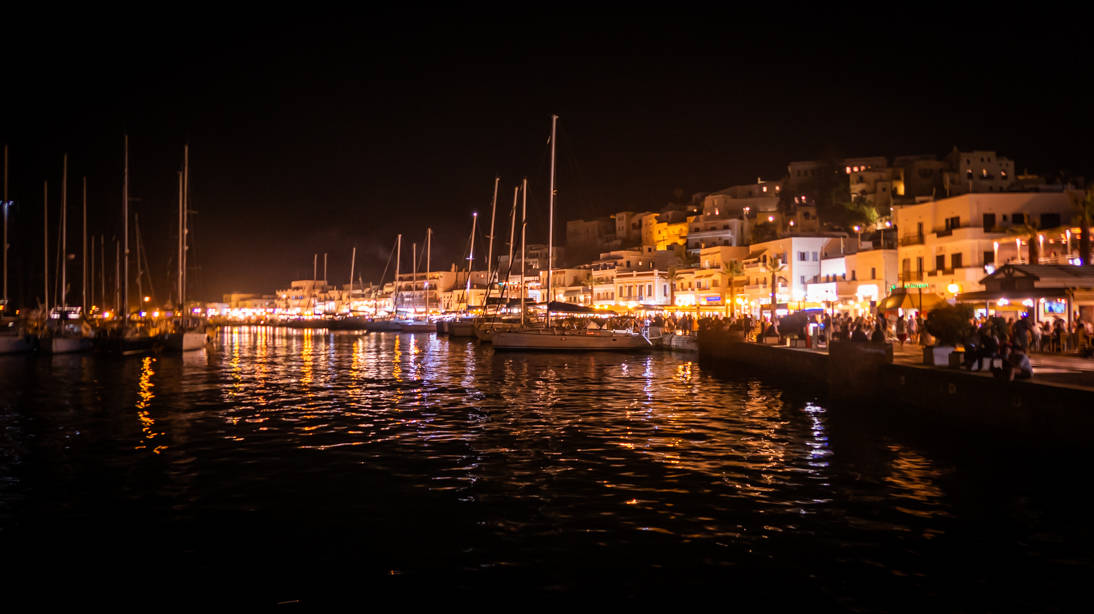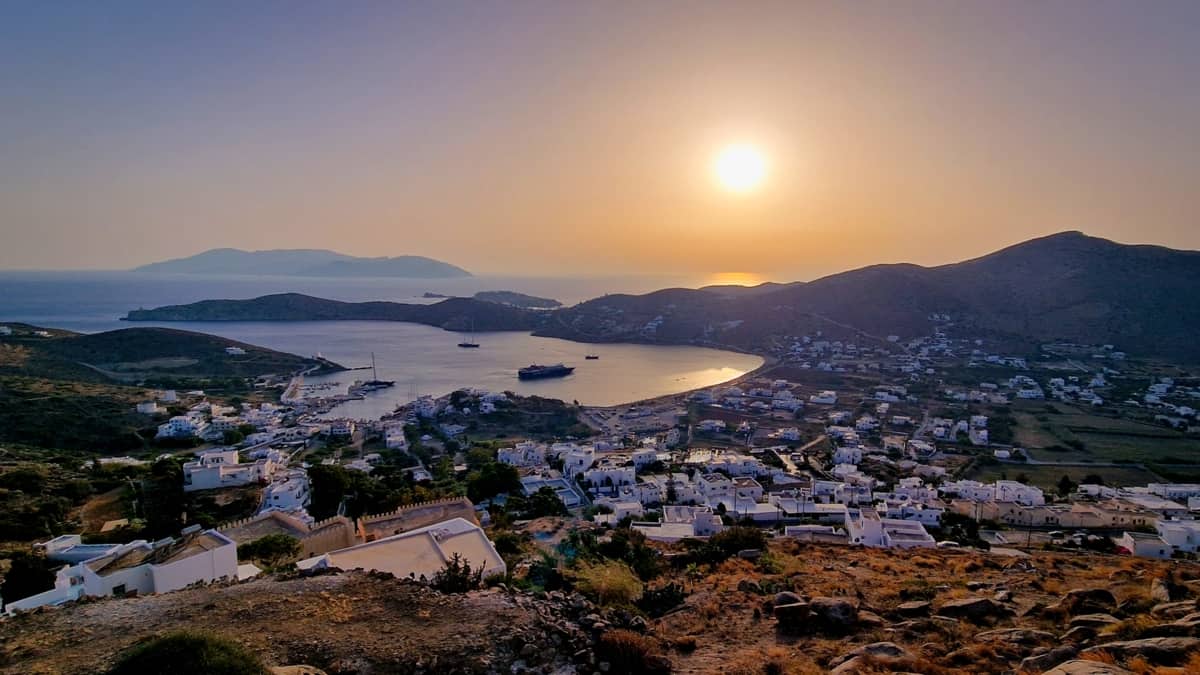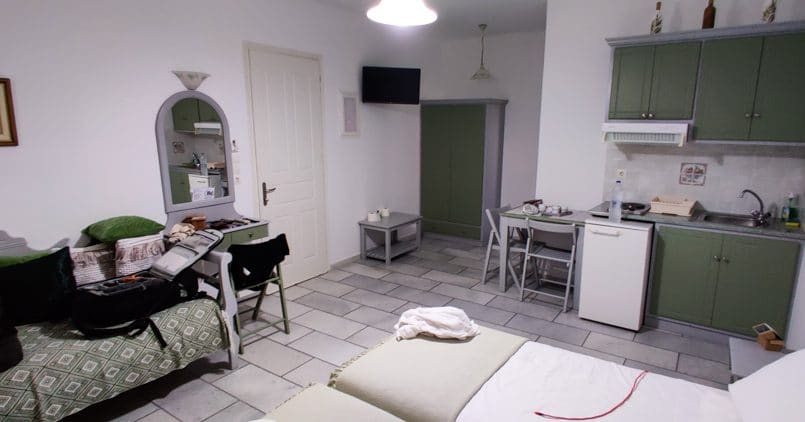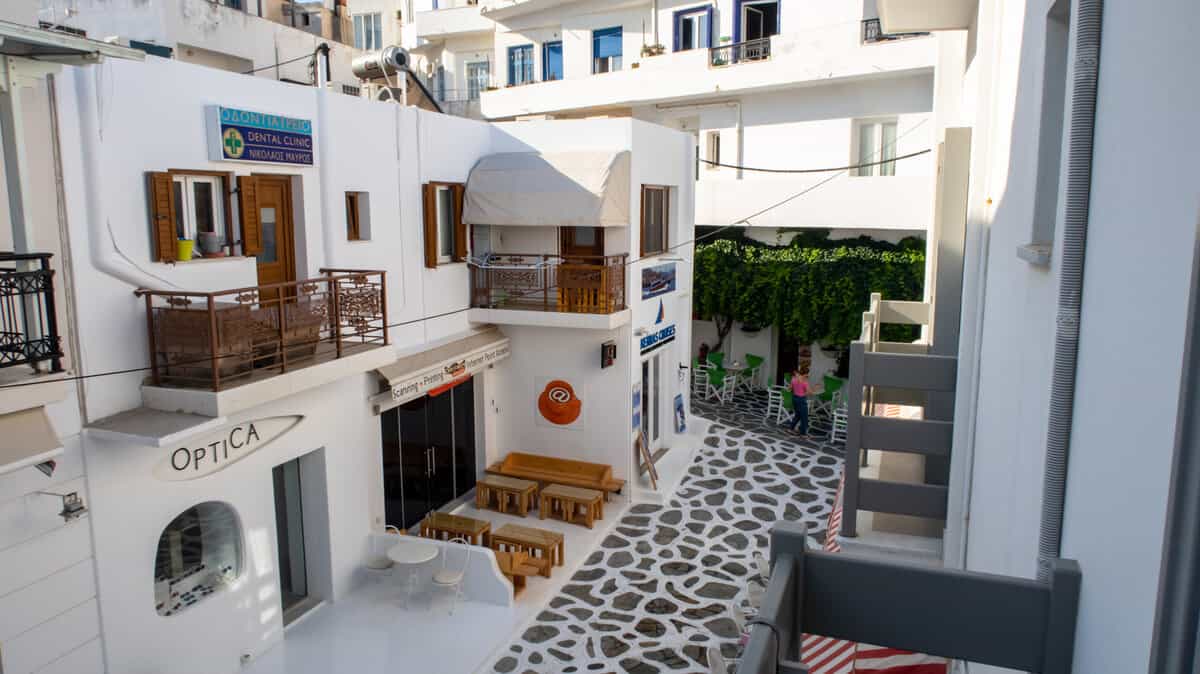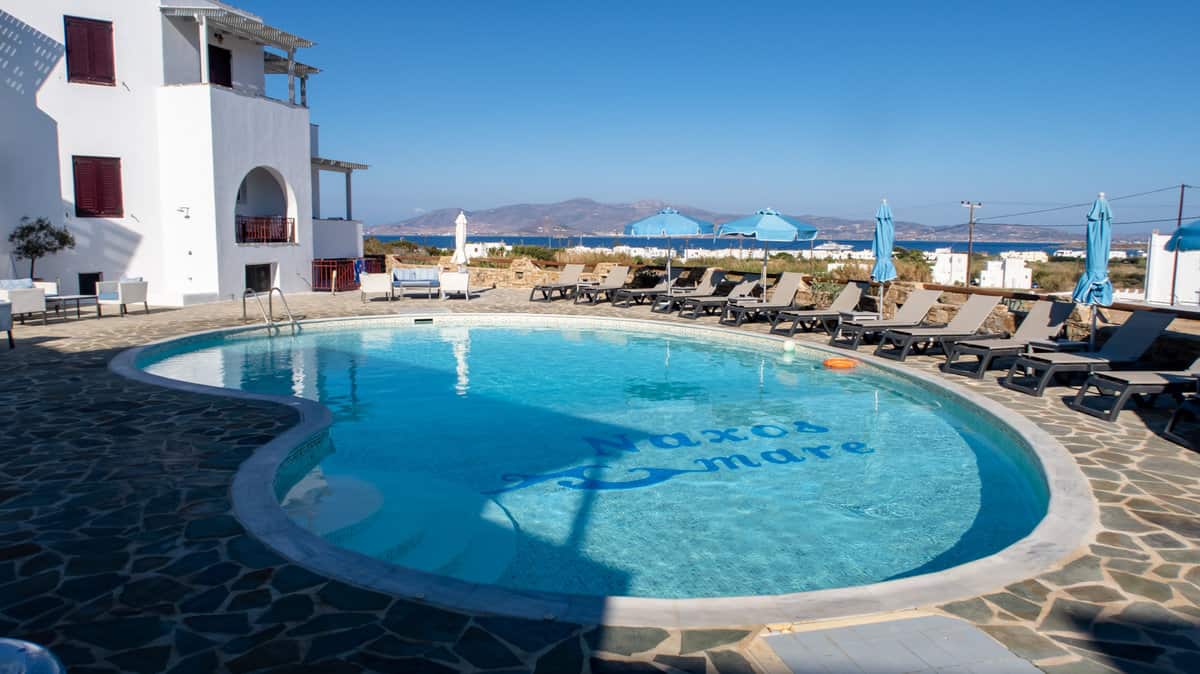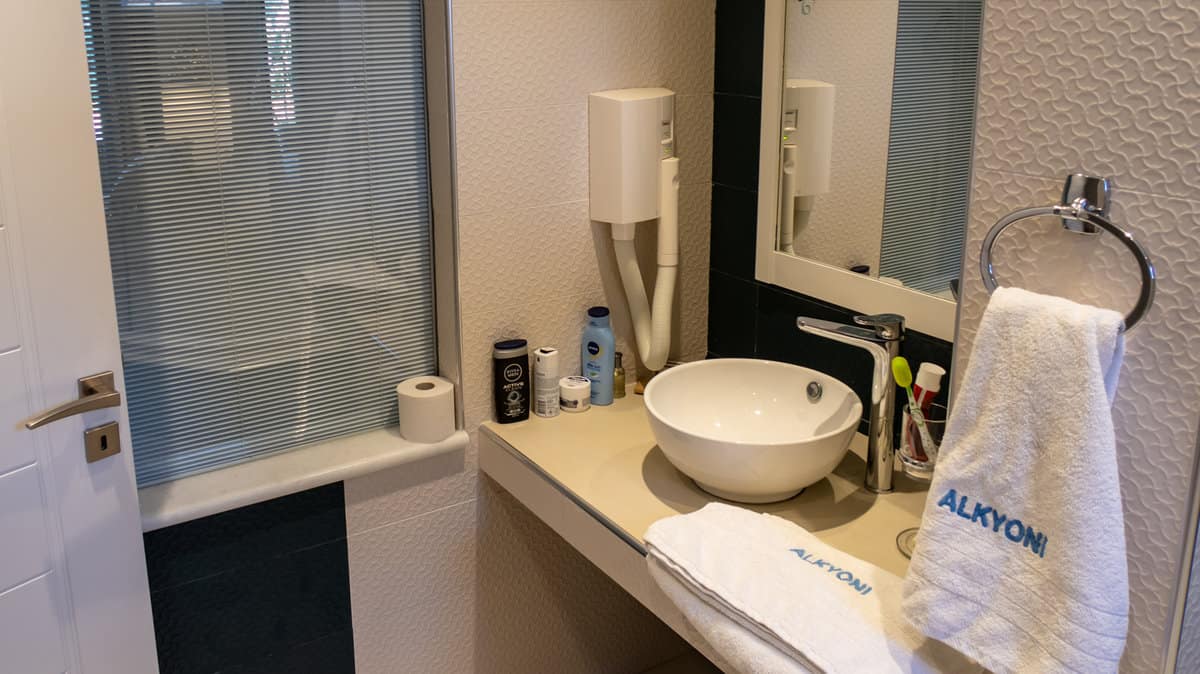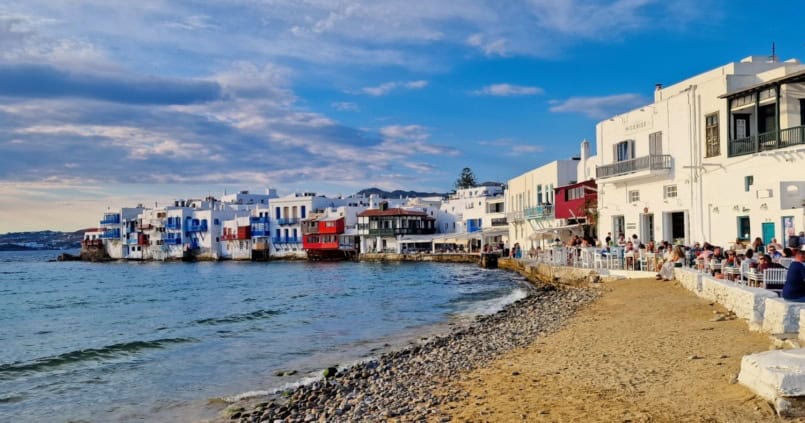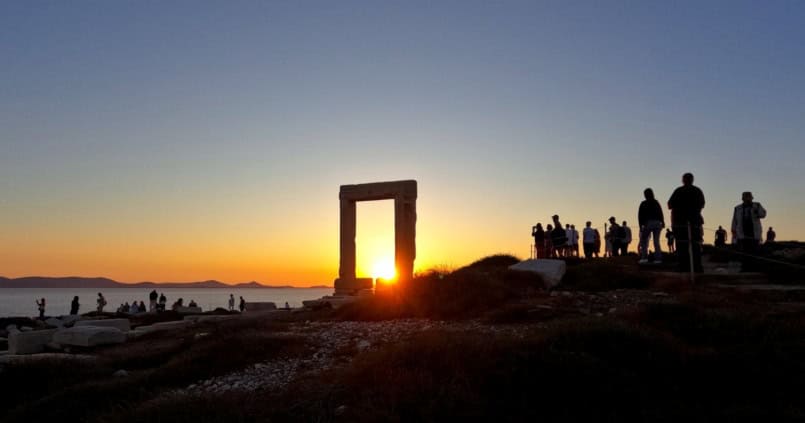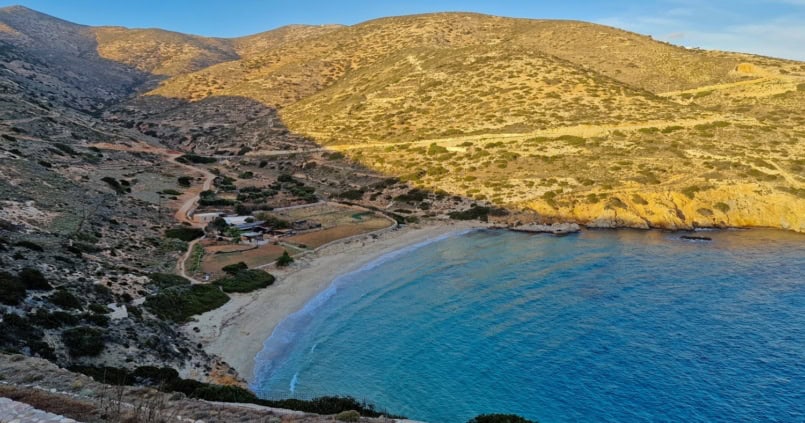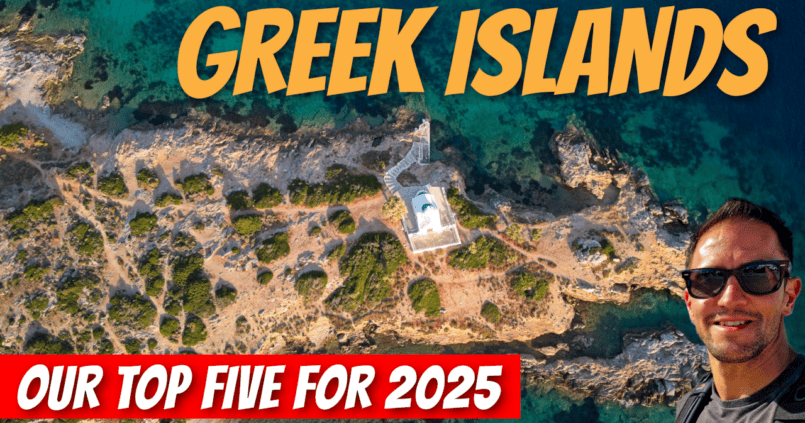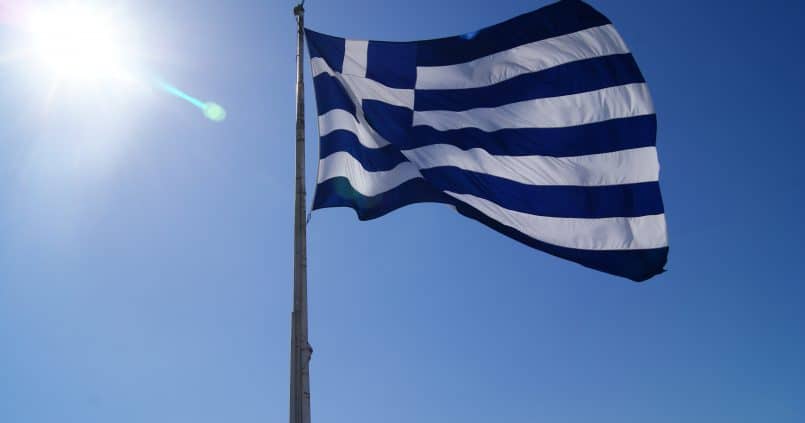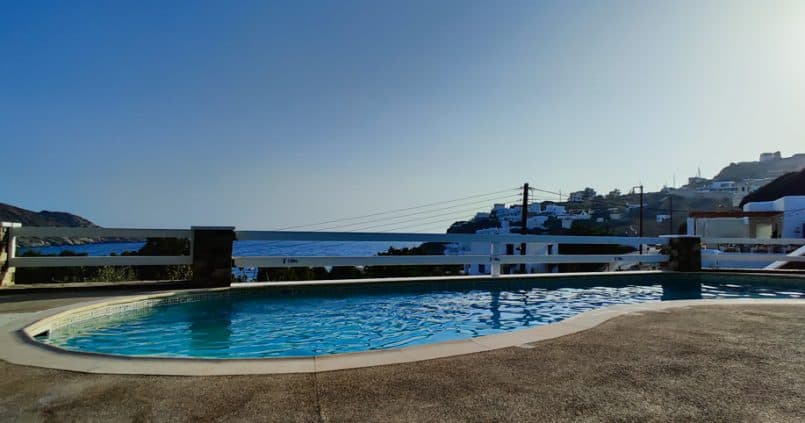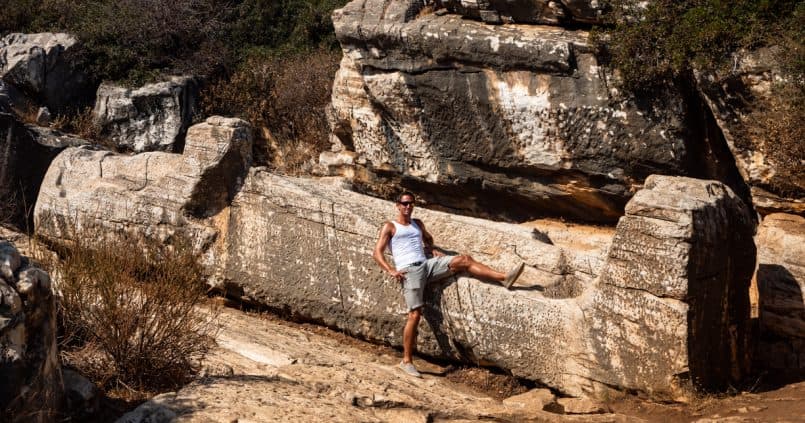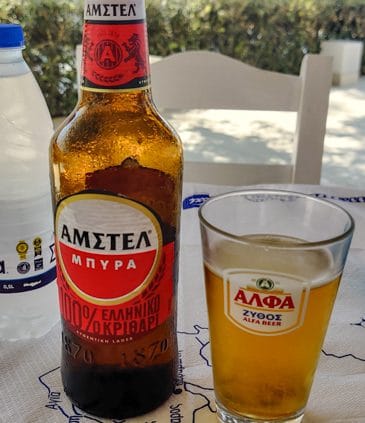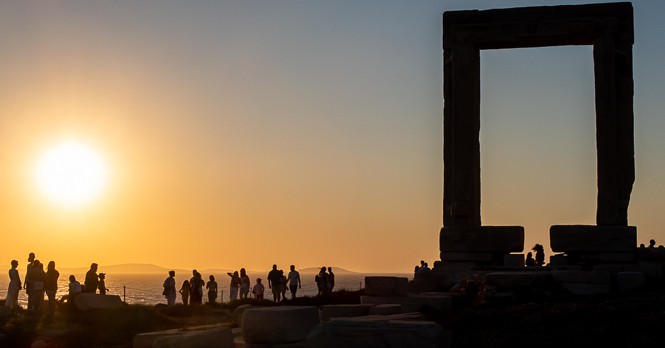
Naxos Island Guide
Naxos Island Overview
Naxos is one of our favourite Greek Islands. It has just the right mix of essential ingredients for the ideal holiday destination: an abundance of fabulous beaches; numerous cafes, bars and tavernas; hotels to suit every budget; and plenty of things to do, with hiking trails, historical sights and cultural opportunities.
Naxos is undeniably Greek in both look and feel. From the narrow Venetian streets of Naxos Town, with its bustling harbour area, to the long, sandy beaches that adorn much of the western coastline, you immediately feel at peace here. As the largest island in the popular Cyclades group, it has something to offer everyone.
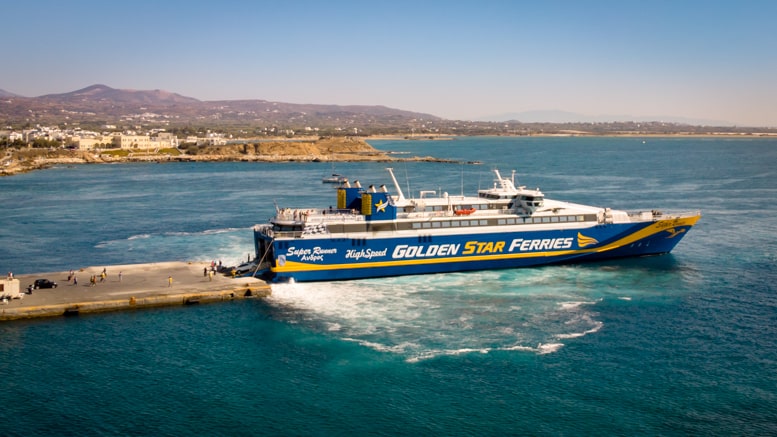
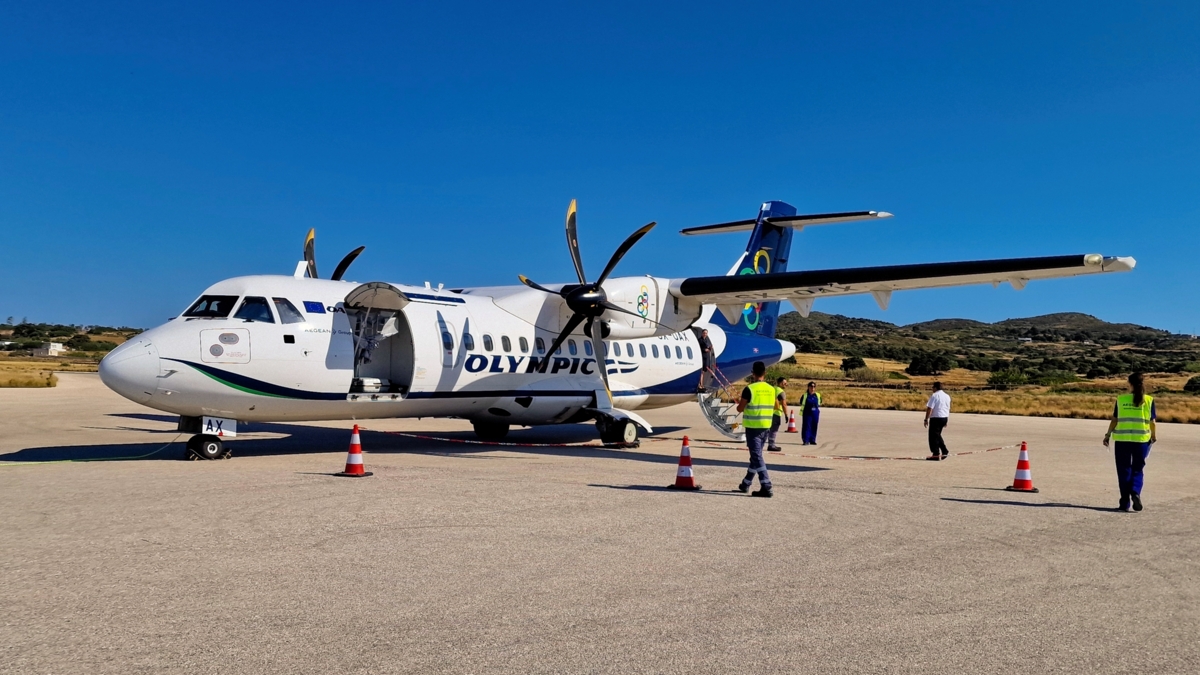

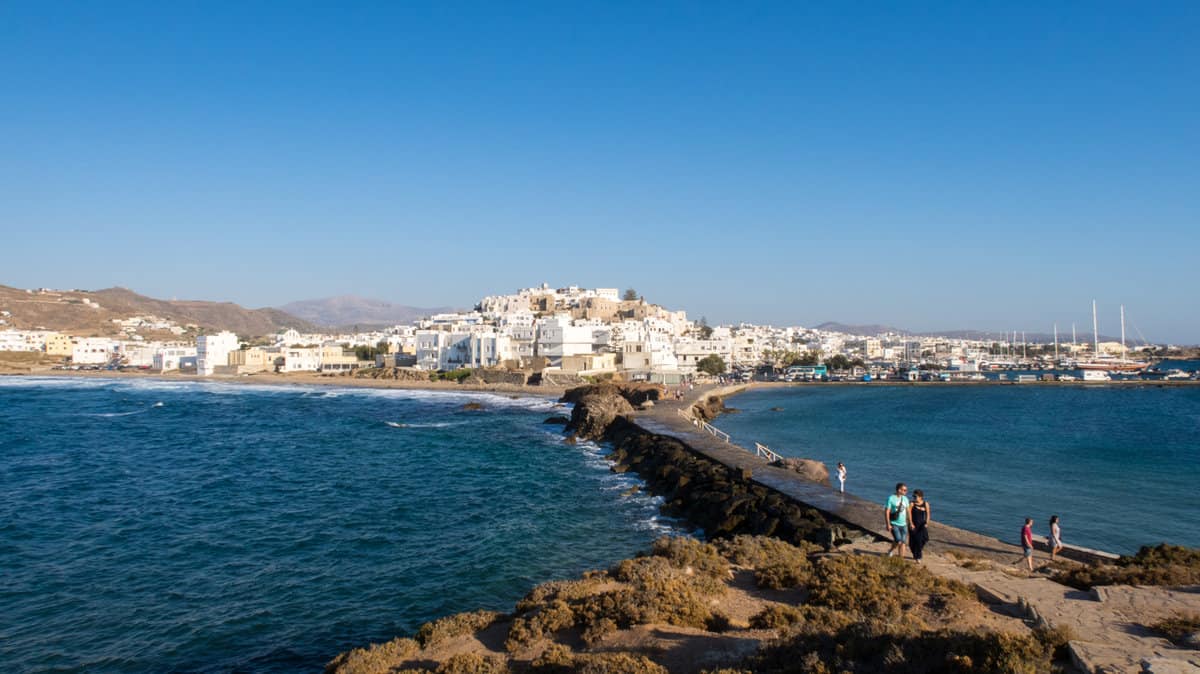
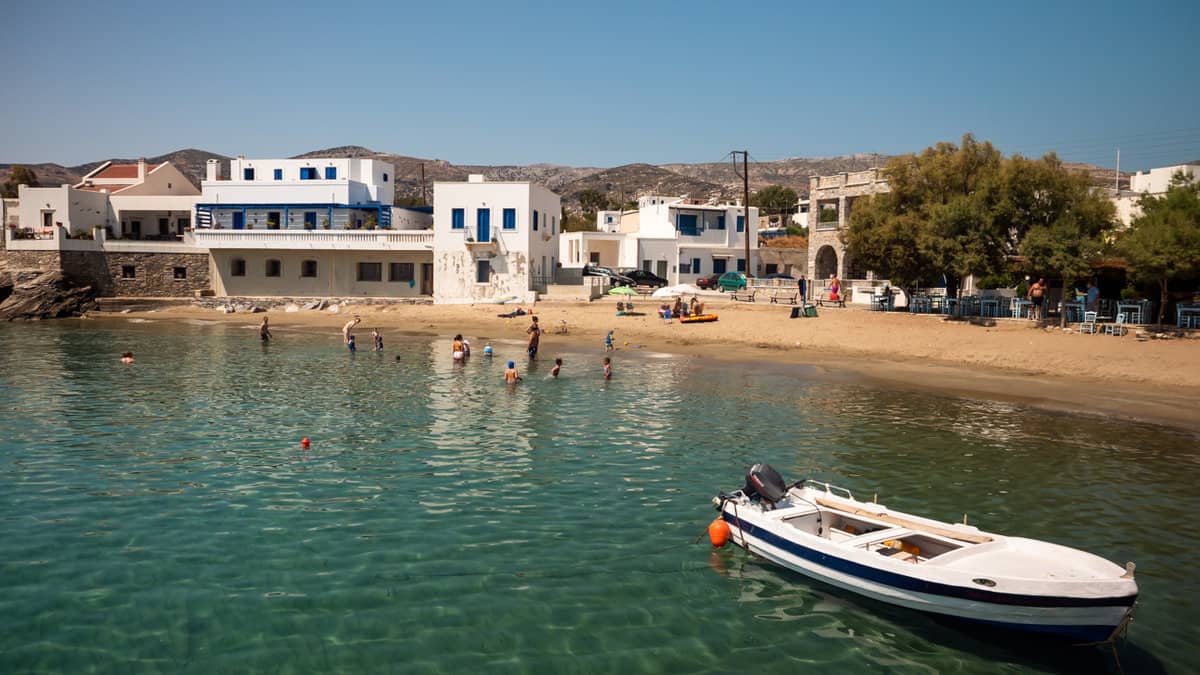

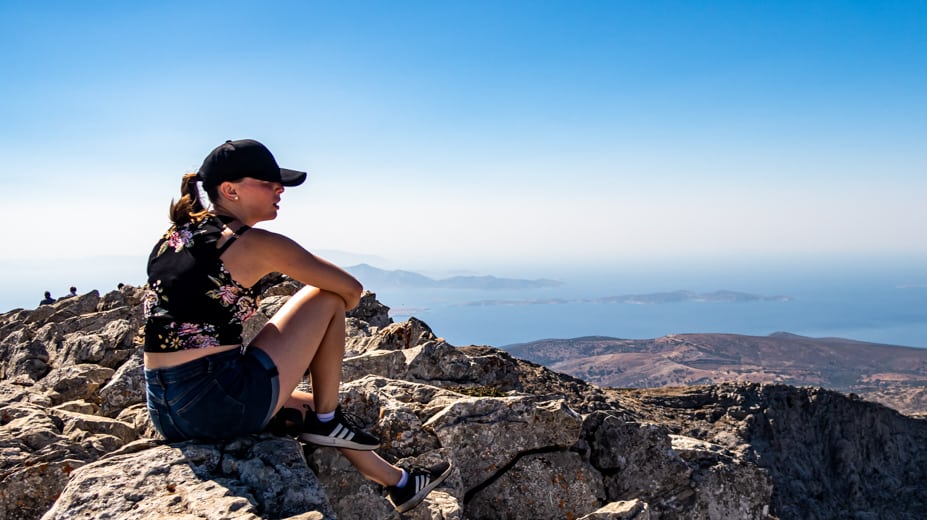
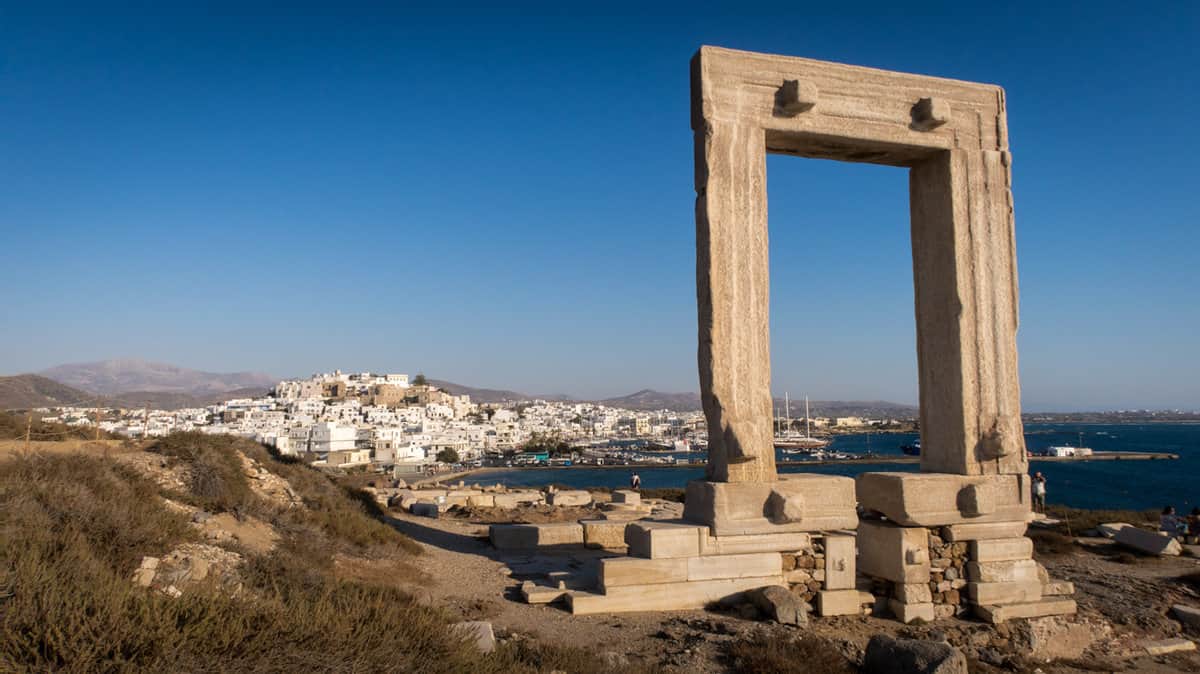


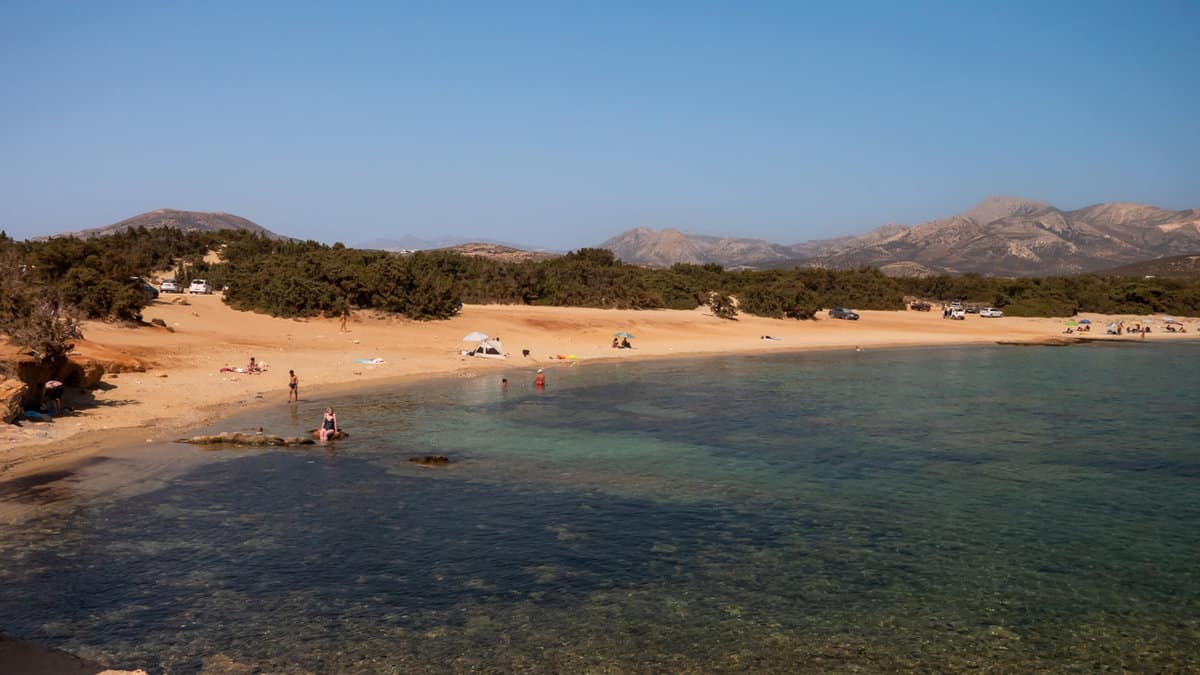

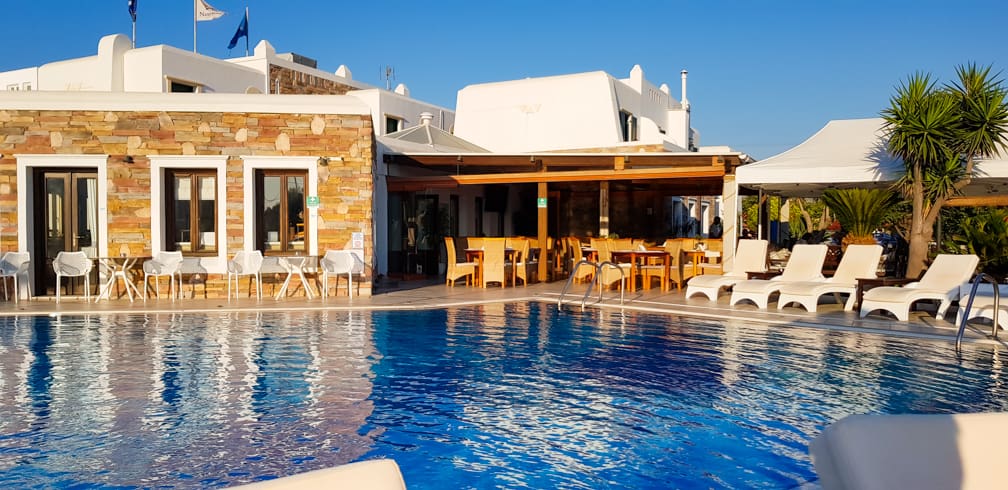
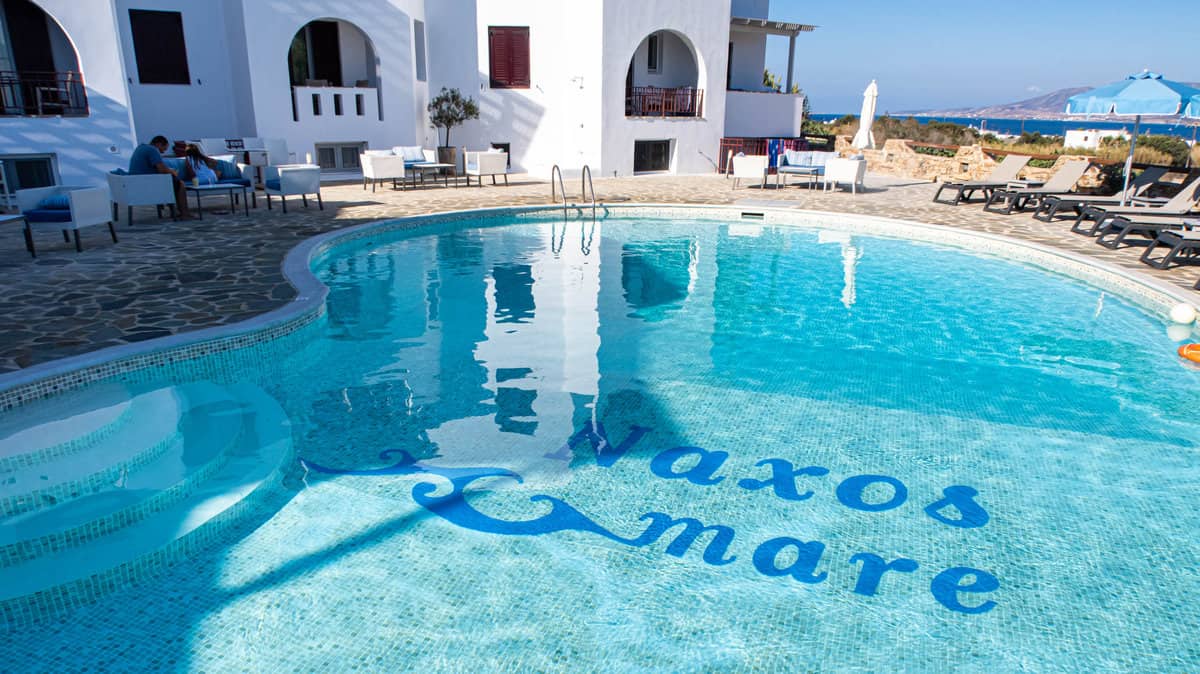


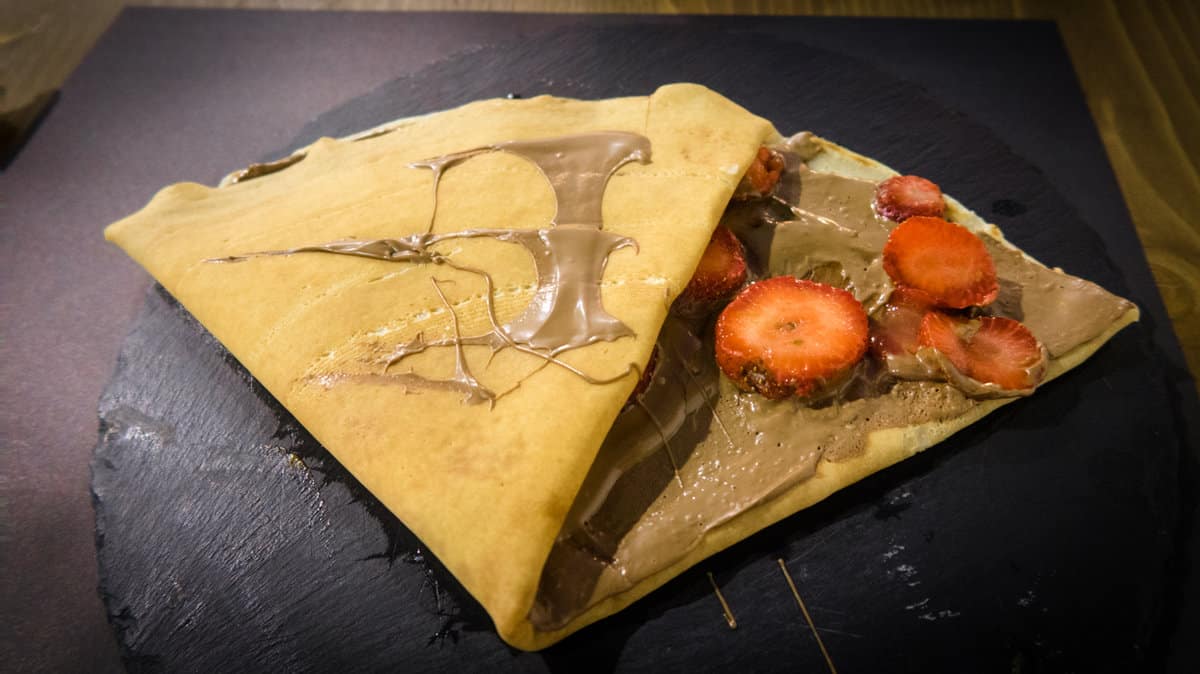

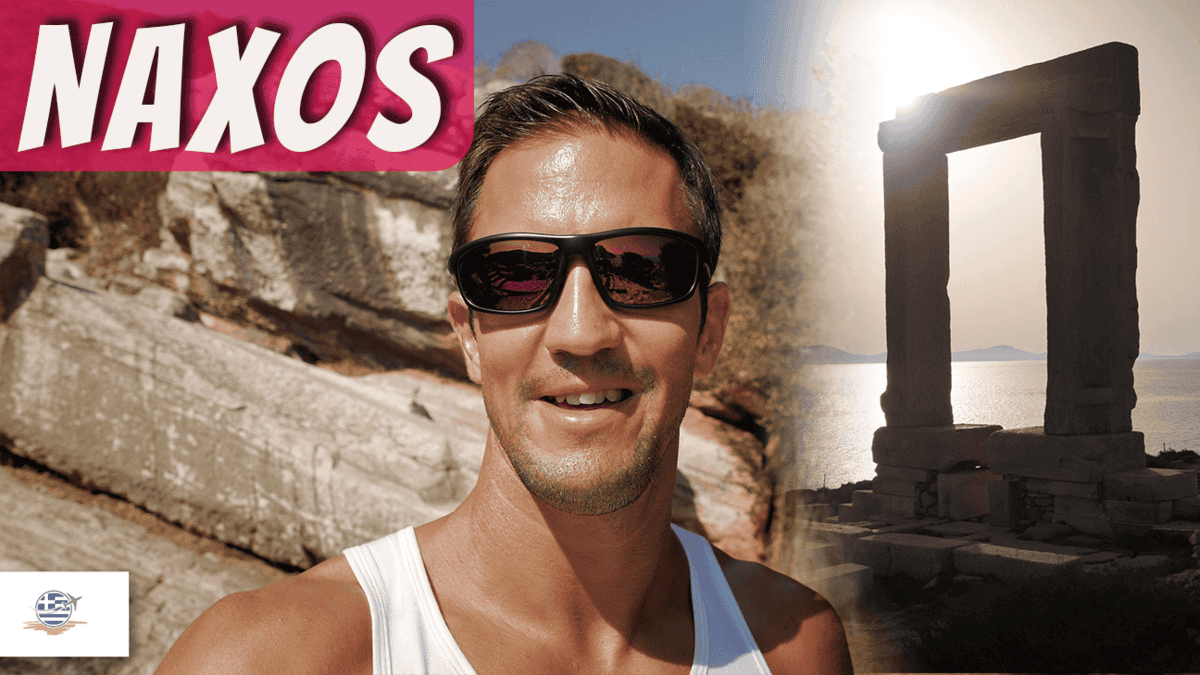


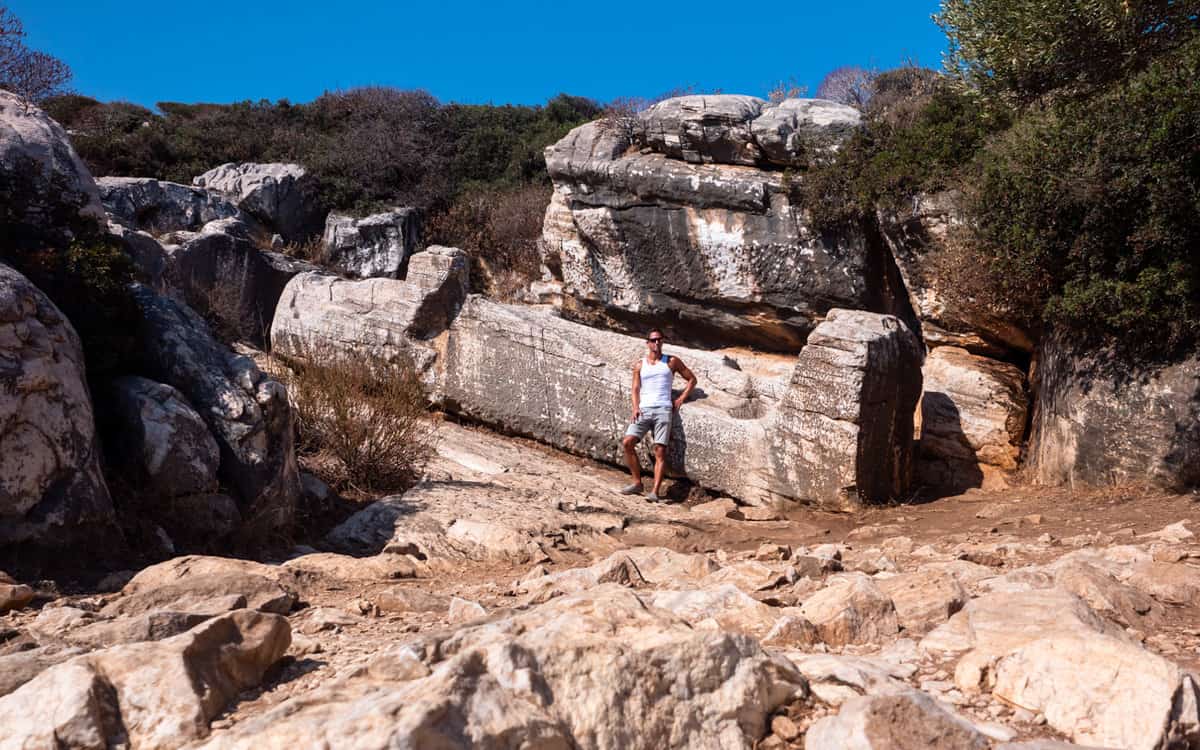
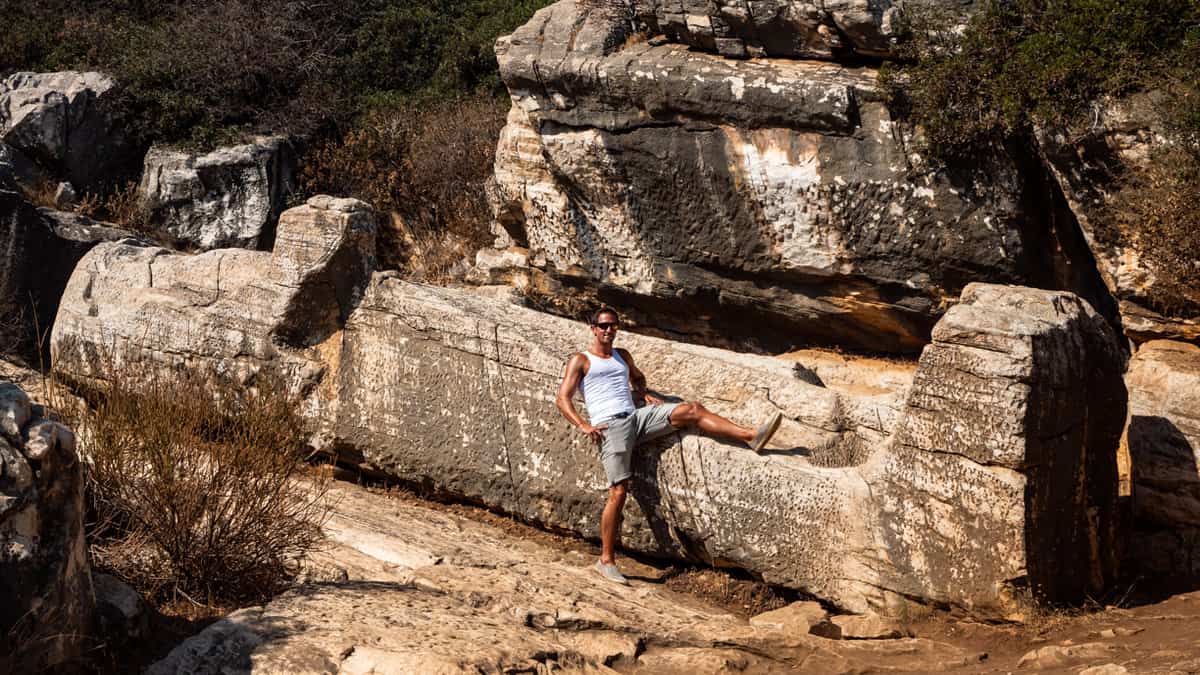




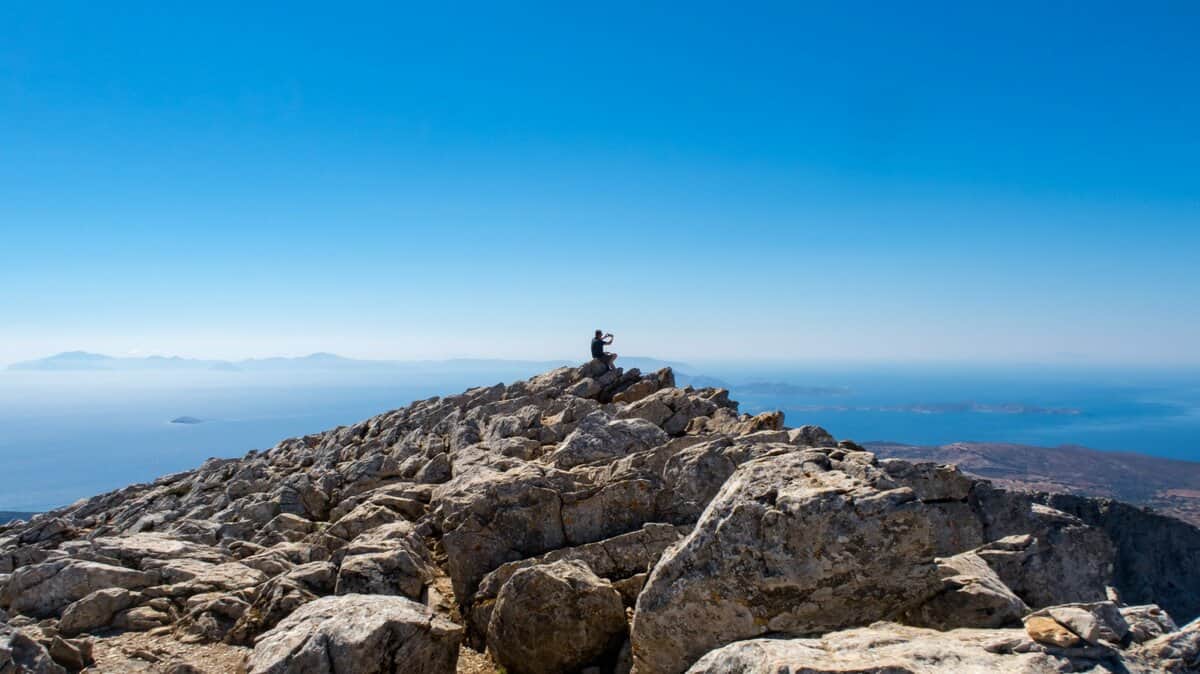


Getting to Naxos
By Ferry
Arriving by ferry, as we’ve always done, Apollo’s Gate sits in full view to the west. As you approach the harbour, it immediately puts the island’s rich culture and history in view. We’ve visited Naxos five times since 2017, and each trip evokes a sense of familiarity mixed with excitement to explore new areas and unwind on its amazing beaches.
Check out available ferry connections using the search box below. Be aware that many Greek ferry operators don’t confirm their summer schedules until March-April of each year, so it’s worth checking back later if you don’t see availability for your chosen dates.
Check out our Greek Ferry Travel Guide for more information on using Greek ferries and our Greek Island-Hopping Guide if you’re interested in combining Naxos with other islands as part of a multi-destination vacation.
By Plane
You can also fly to Naxos from Athens via its small regional airport, making it easily accessible for those visiting from outside Europe if you don’t fancy the 3 to 5-hour ferry from the mainland. From within Europe, the quickest option is an international arrival to neighbouring Mykonos, followed by a 40-minute ferry ride.
Where to Stay on Naxos
Naxos is the largest island in the Cyclades and offers a diverse range of places to stay, from lively coastal resorts to peaceful mountain villages. Each area has its own unique character, making it easy to find the perfect base whether you’re looking for beach relaxation, cultural experiences, or rural charm.
Naxos Town (Chora)
Naxos Town is the island’s bustling capital and the main hub for transport, shopping, dining, and nightlife. The historic old town, with its Venetian castle, winding alleyways, and waterfront cafés, is a magnet for travellers who want to be close to everything. It’s an excellent base for first-time visitors, offering easy access to both local attractions and nearby beaches.

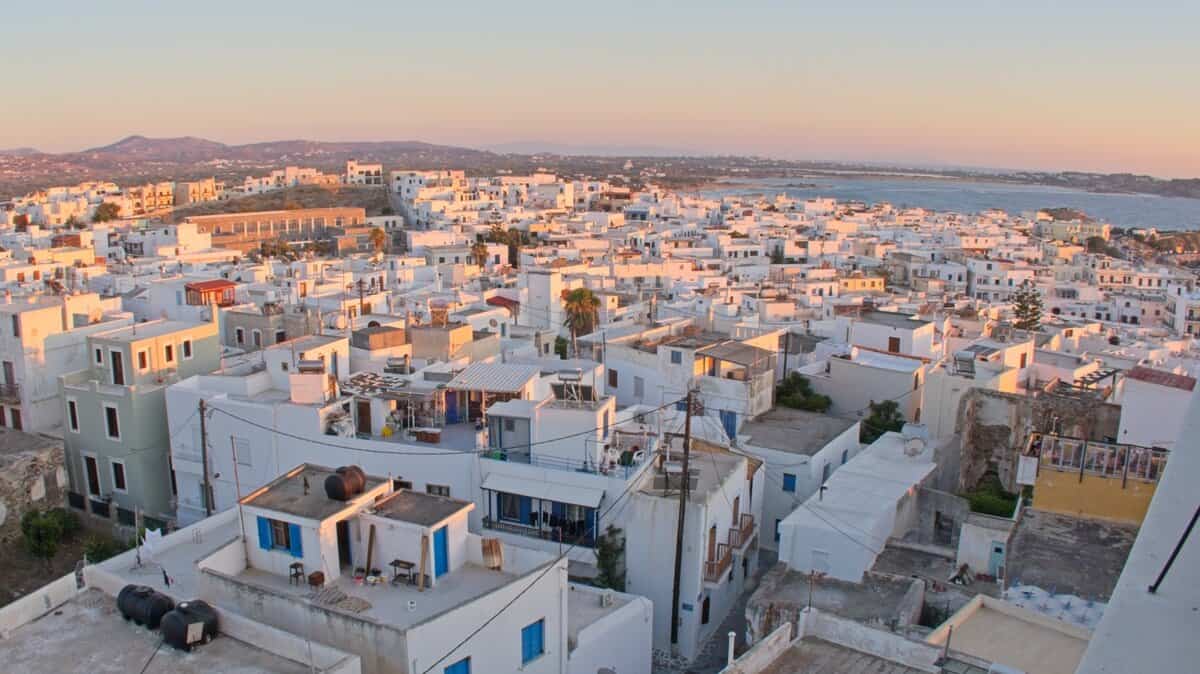
Agios Prokopios
Just a short drive from Chora, Agios Prokopios is one of Naxos’s most popular beach resorts. Known for its long stretch of soft sand and calm, clear waters, it’s ideal for families, couples, and sun-lovers. The area is well-developed but retains a laid-back feel, with plenty of restaurants, cafés, and beach facilities. It can get quite busy during the peak summer season, though, so if you prefer a quieter base, consider staying further south.
Agia Anna
Sitting right next to Agios Prokopios, Agia Anna offers a slightly quieter but equally charming beachside experience. With its small harbour, sandy beach, and casual atmosphere, it’s perfect for travellers seeking a more relaxed pace while still being close to amenities and beach activities.
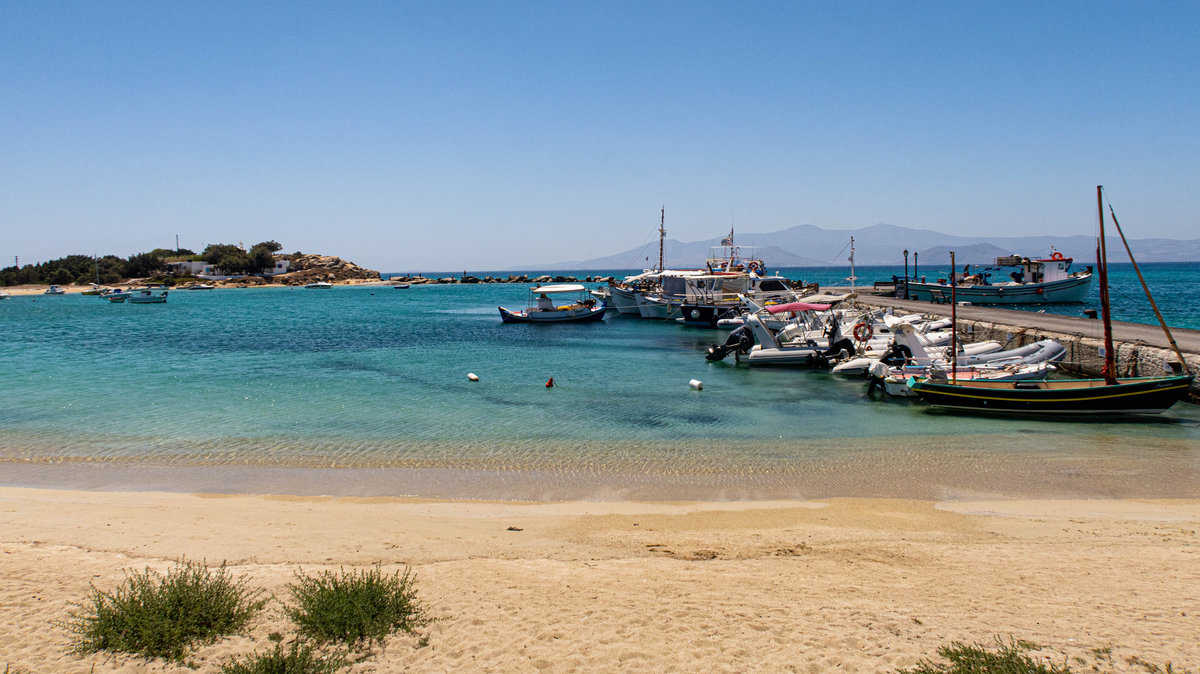
Plaka Beach
Plaka is a long, open beach known for its natural beauty and peaceful vibe. It’s ideal for those looking for a quieter, more spacious alternative to the busier resorts. While the area is less developed, there are still plenty of tavernas and services, and it’s a favourite among couples and independent travellers looking to unwind by the sea.

Stelida
Perched between Agios Prokopios and Chora, Stelida is a quiet hillside area that offers panoramic views and a peaceful setting. It’s a good choice for visitors who want to stay somewhere tranquil but still within easy reach of beaches and the main town.
Chalki and the Tragaia Valley
For a taste of traditional Naxos, consider staying in the island’s interior. Chalki is a charming village surrounded by olive groves, Byzantine churches, and ancient footpaths. This area is perfect for hiking, exploring local culture, and experiencing the slower side of island life, away from the coastal crowds. Nearby Filoti and Apeiranthos offer a similar traditional Naxian village experience.
Apollonas
Located on the remote northern coast, Apollonas is a former fishing village with a relaxed, authentic feel. It’s ideal for those looking to escape the busy resorts and enjoy a more off-the-beaten-path experience. The surrounding area offers beautiful coastal walks and historical sites, including the famous Kouros statue.
Naxos Sightseeing & Things to Do
Naxos is more than just stunning beaches — it’s a fascinating island where ancient history, traditional culture, and rugged natural beauty come together. Whether you’re a history buff, an outdoor adventurer, or simply curious about authentic island life, Naxos has plenty to explore.
Apollo’s Gate (Portara)
One of the island’s most iconic landmarks, the Portara is the towering marble doorway of an unfinished 6th-century BC temple dedicated to Apollo. Standing on the islet of Palatia at the entrance to Naxos Town’s harbour, it’s the first thing visitors see when arriving by sea. It’s especially magical at sunset, when the massive frame perfectly captures the fiery Aegean horizon — a must-visit for photographers and romantics alike.
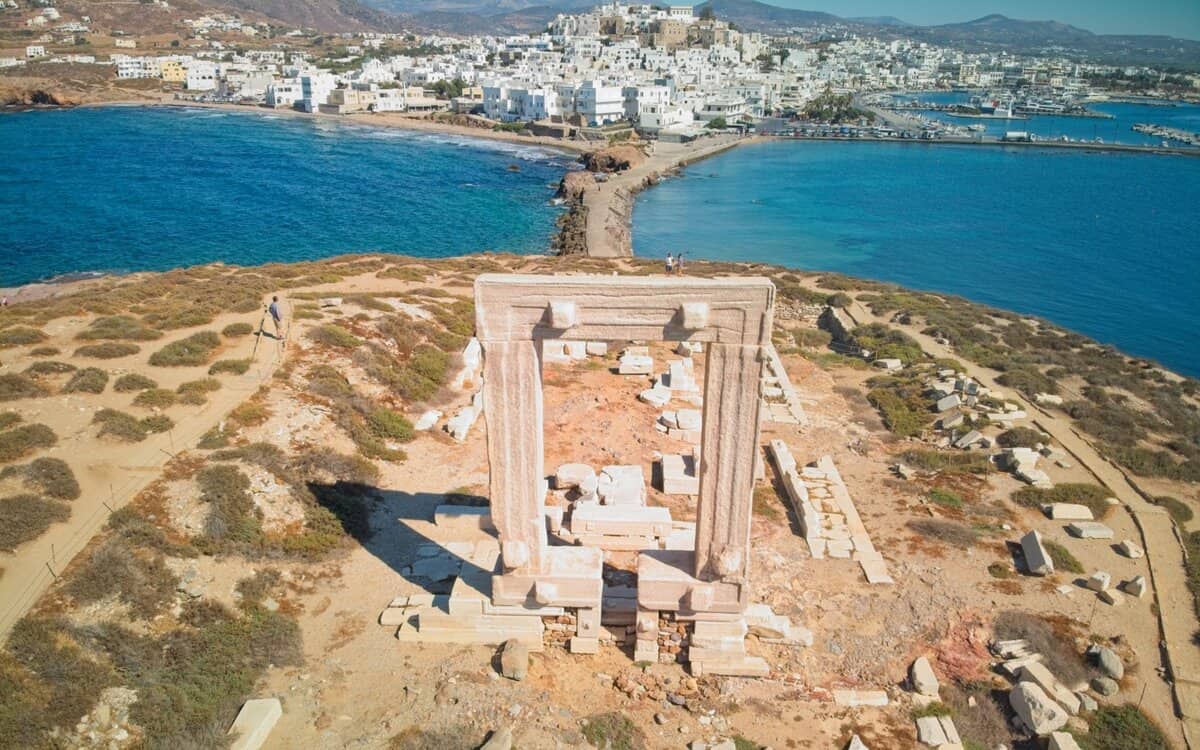
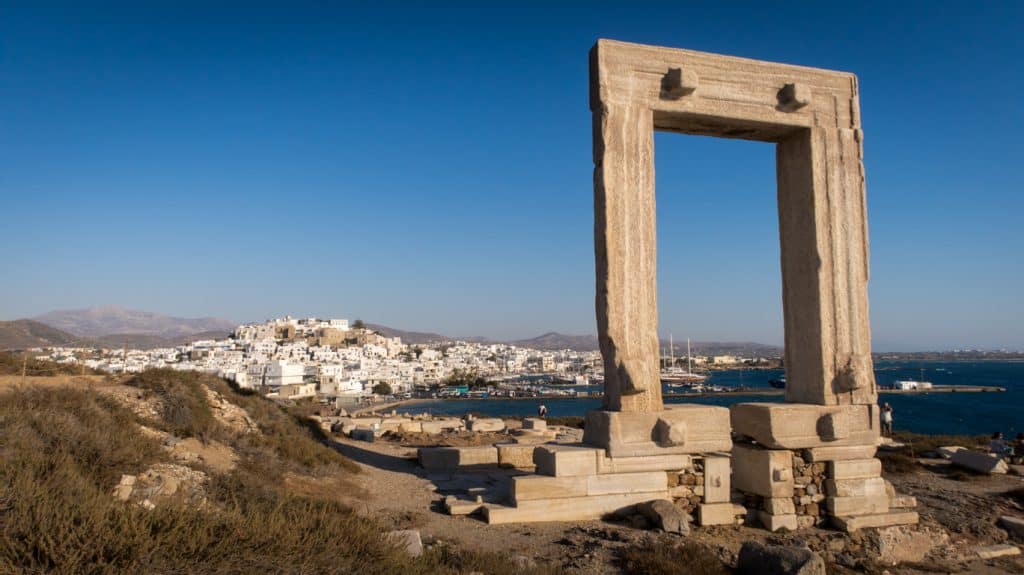
Kouros Statues
Scattered around the island’s countryside are three massive, ancient statues known as the Kouroi, representing young male figures from the Archaic period. The most accessible is the Kouros of Apollonas, also known as the “Colossus,” lying unfinished in a quarry near the village of the same name. The others, near Melanes and Flerio, offer a fascinating glimpse into ancient sculpture techniques and are a rewarding stop for history lovers and hikers alike.

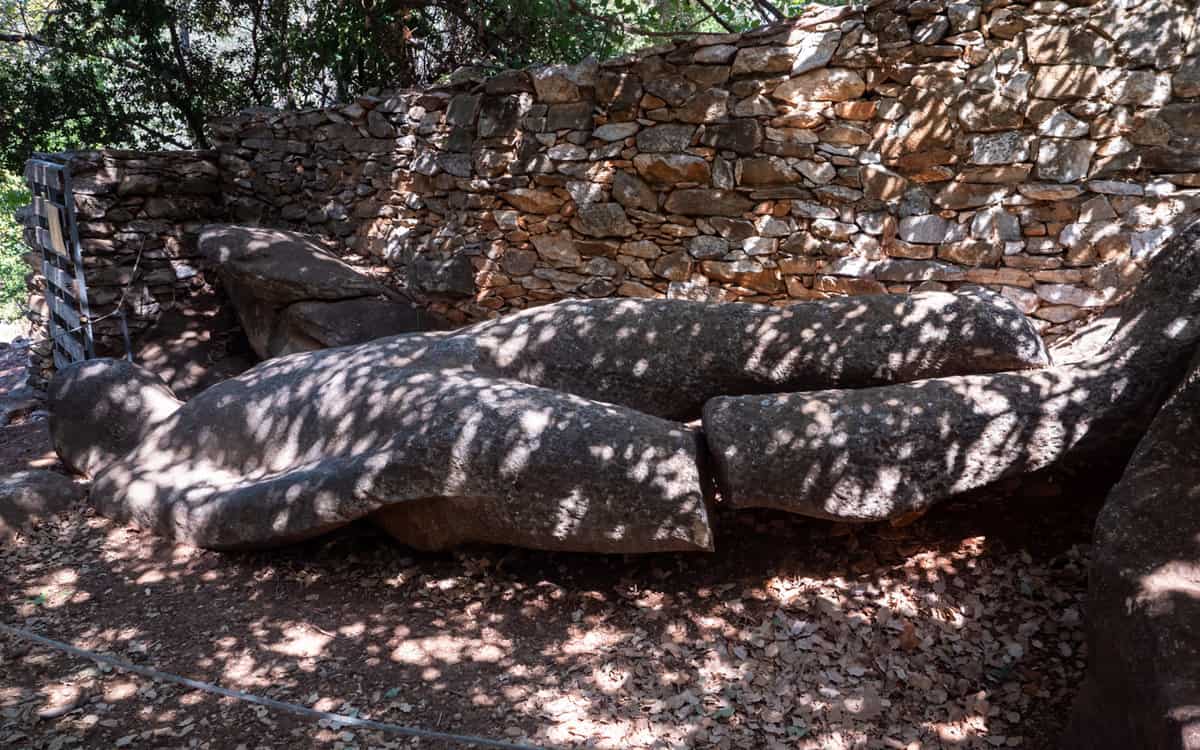

Temple of Demeter
Located near the village of Sangri, the Temple of Demeter is one of the earliest examples of classical Greek architecture built entirely of white marble. Dating back to around 530 BC, it was dedicated to Demeter, the goddess of agriculture — a fitting tribute in one of Naxos’s most fertile valleys. The restored temple site includes a small museum and is best visited in the morning or late afternoon for optimal lighting and fewer crowds.
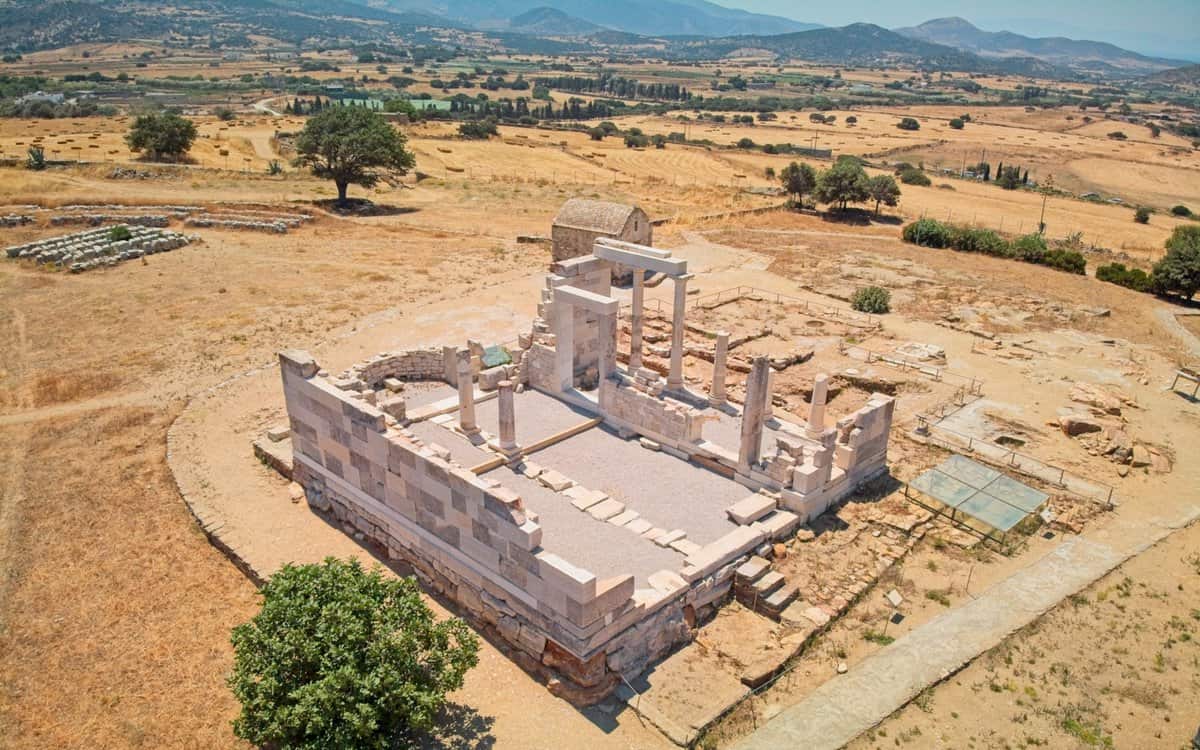
Mount Zas
Naxos is also home to the highest peak in the Cyclades: Mount Zas (also spelt Mount Zeus), which, according to mythology, was where the god Zeus spent his childhood. Hiking to the summit (1,004 meters) offers spectacular views of the island and the surrounding Aegean. Along the way, you can also visit the Cave of Zeus, believed to have been a place of worship in antiquity. The hike is moderately challenging but well worth the effort for nature lovers and outdoor enthusiasts.
If you don’t fancy the steeper ascent via Zeus’ Cave, you can take the local bus to Agia Marina Chapel, north of the summit, and follow the marked trail. The hike is 2.7km and takes roughly an hour to the top. It’s best to start early in the morning and allow 3 hours in total. Bring plenty of water and wear suitable clothing and a hat, as there is minimal shade on the route.
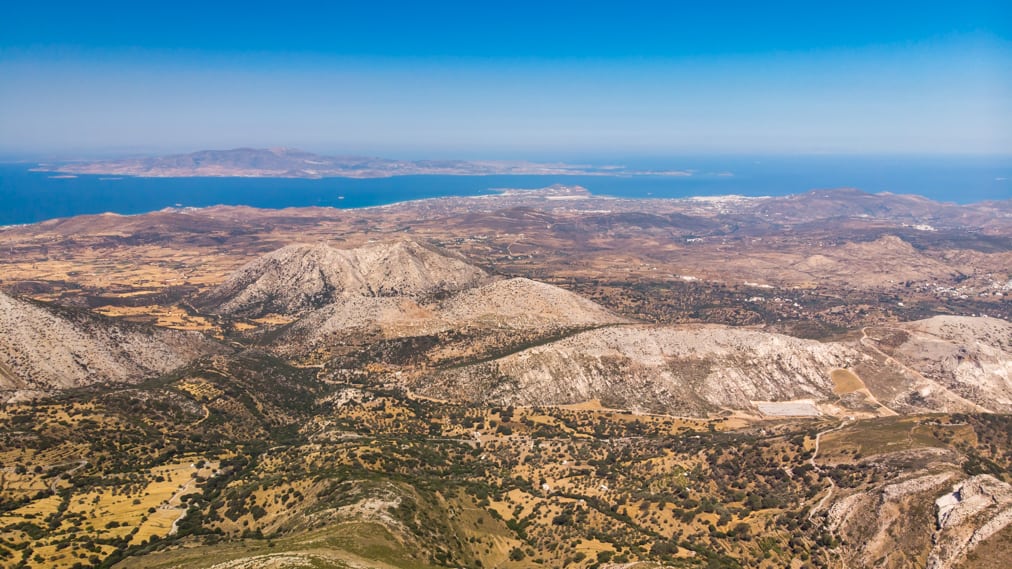
Naxos Town Fortress, Chalki, Filoti and Aperianthos
While these are the star attractions, don’t miss the charm of Naxos Old Town, with its Venetian Kastro (castle), labyrinthine streets, and rooftop cafés. Traditional mountain villages like Chalki, Filoti, and Apeiranthos offer authentic food, local crafts, and a chance to experience island life away from the coast.
Naxos Beaches
Naxos is home to some of the finest beaches in the Cyclades — long, sandy, and lapped by crystal-clear waters. From lively family spots to more tranquil stretches of coastline, the beaches of Naxos cater to every kind of sun-seeker. Three of the most popular and accessible are Agios Georgios, Agia Anna, and Plaka, each offering a slightly different vibe.
Agios Georgios (Saint George) Beach
Located just a short walk from Naxos Town (Chora), Agios Georgios (Saint George’s) is the island’s most accessible beach and a favourite among families and casual beachgoers. With shallow, calm waters and golden sand, it’s ideal for swimming, especially for children. The beach is well-organised with sunbeds, umbrellas, cafés, and restaurants lining the shore, and even offers water sports like windsurfing and paddleboarding in the breezier southern end. If you’re staying in or near town and want a relaxed beach day without needing a car, Agios Georgios is perfect.
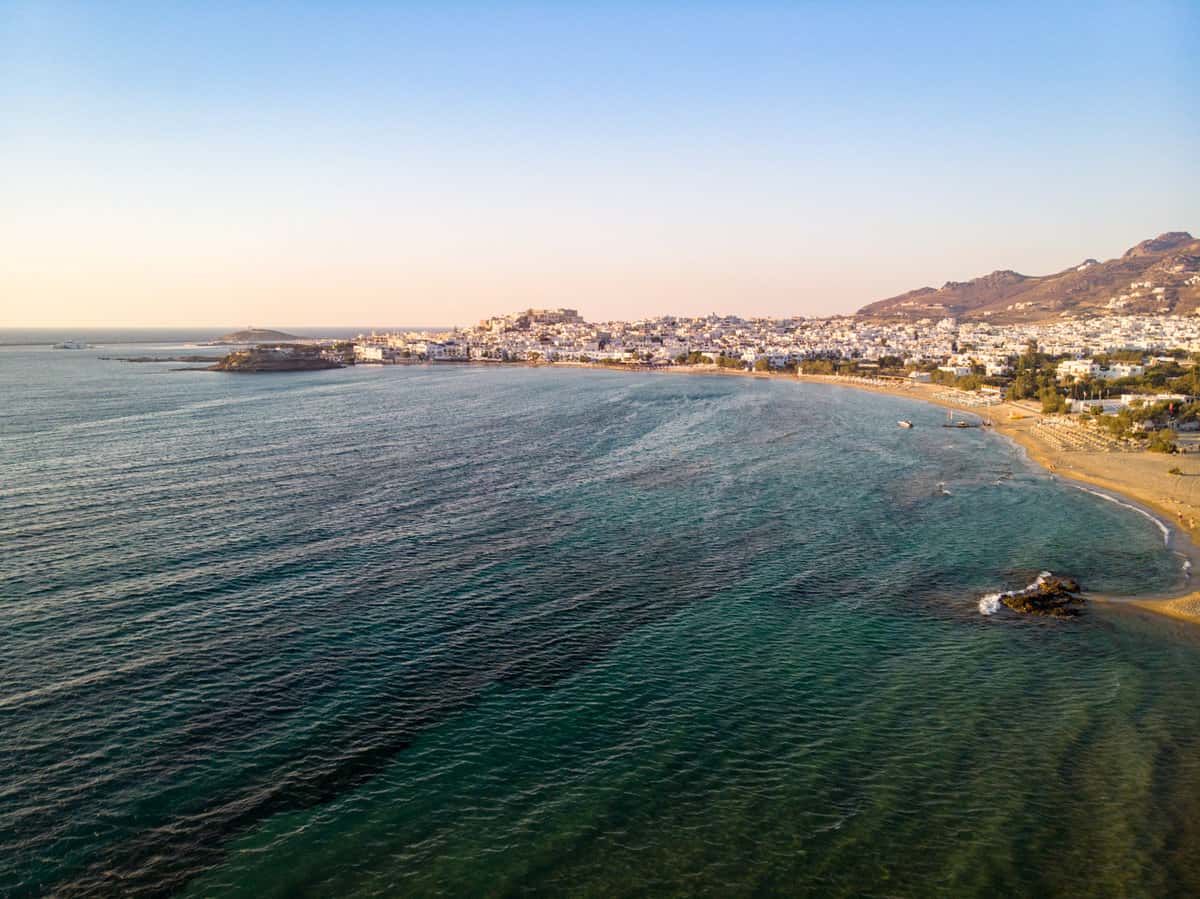
Agia Anna Beach
A little further south, Agia Anna is a charming beach with soft sand, clear turquoise waters, and a small harbour that adds to its picturesque appeal. It has a cosy, slightly quieter feel compared to Agios Georgios, but still offers plenty of facilities — including beachfront tavernas, cafés, and accommodation just steps from the sea. Agia Anna is ideal for couples and those who prefer a more laid-back beach day with good food close at hand. You can easily walk here from nearby Agios Prokopios or take a short drive from town.
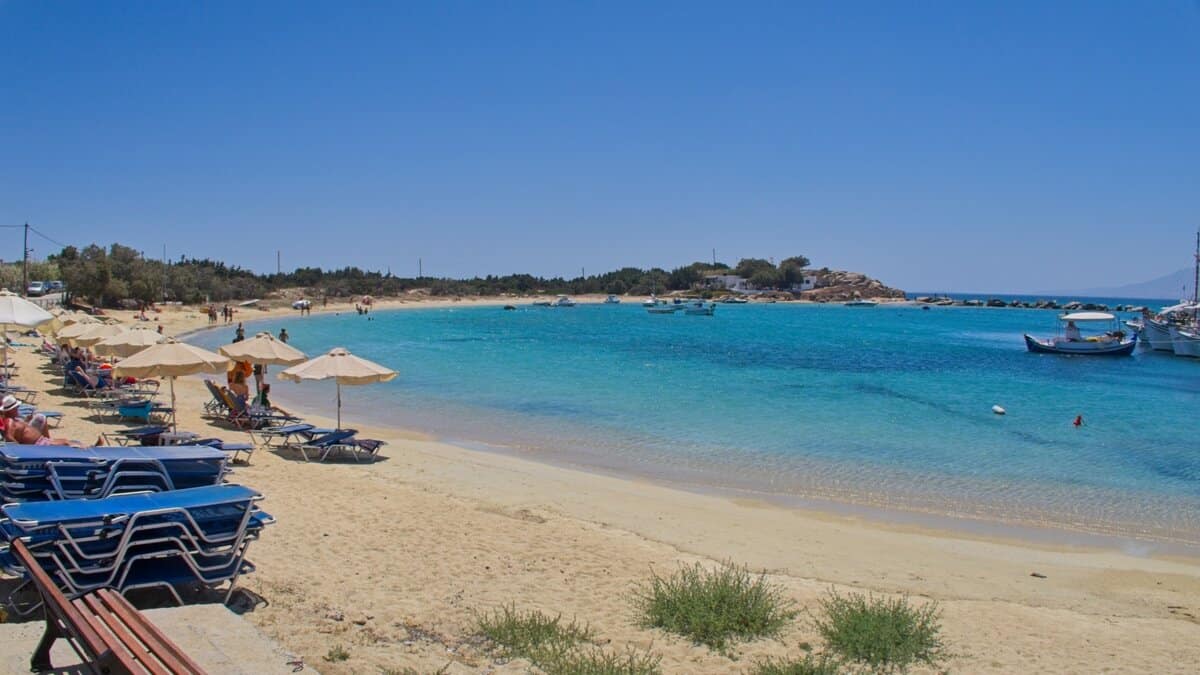
Plaka Beach
For many visitors, Plaka is the ultimate Naxos beach experience. Stretching for several kilometres, this expansive and mostly undeveloped beach is known for its natural beauty and soft, white sand. The atmosphere is peaceful and uncrowded, making it perfect for long beach walks, sunbathing in solitude, or swimming in clear, shallow waters. While parts of the beach are organised with sunbeds and umbrellas, much of Plaka remains blissfully quiet. It’s popular with couples, naturists (especially in the quieter southern end), and anyone looking for a more serene beach day. A short drive or local bus ride from Chora will bring you straight to its golden shores.

Accommodation on Naxos
Naxos offers an excellent mix of accommodation options across its towns, villages, and beaches — whether you’re after luxury, convenience, or traditional island charm. Here are some standout places to stay in each of the island’s most popular areas.
In Naxos Town (Chora), Hotel Grotta is a long-time favourite for its warm, family-run atmosphere, sea views, and generous breakfasts — all just a short walk from the Old Town and Portara. For something more luxurious, Nissaki Beach Hotel offers boutique elegance right on Agios Georgios Beach, blending comfort with a prime location. Another great option just outside the centre is The Saint Vlassis, a stylish and peaceful hotel known for its personal service and modern design.
If you’re staying in Agios Prokopios, a resort area famous for its soft sand and turquoise sea, Naxos Island Hotel is a chic, modern option located near the beachfront with a rooftop pool and wellness facilities. For something more laid-back and family-friendly, Katerina Hotel offers excellent value and a welcoming atmosphere just a few minutes from the beach. Nearby, Hotel Proteas provides a quiet, relaxed setting with a pool and easy access to both the beach and local restaurants.
In Agia Anna, which blends a relaxed vibe with great swimming and dining, Iria Beach Art Hotel stands out for its Cycladic elegance and beachfront location. Couples and solo travellers looking for a peaceful escape will also enjoy the comfort and proximity to tavernas that Agia Anna’s many small boutique hotels and studios offer.
Further along the coast at Plaka Beach, Medusa Resort offers a more secluded experience with direct beach access and a tranquil garden setting — perfect for travellers seeking peace and privacy. Plaka also has a variety of stylish self-catering studios and suites that appeal to couples and families alike, many just steps from the sand.
For those wanting to stay inland, Chalki and the Tragea Valley offer a completely different experience. Boutique guesthouses provide a traditional yet comfortable base surrounded by olive groves and historic walking trails. It’s a great area for hikers, culture seekers, and those wanting to immerse themselves in local village life.
Up in the mountains, the marble-built village of Apeiranthos also offers a handful of stone guesthouses and traditional inns, where you can enjoy local hospitality, panoramic views, and a truly authentic atmosphere—far from the summer crowds.
No matter where you choose to stay on Naxos, the island’s charm is matched by warm hospitality and a wide range of accommodation that suits both relaxed getaways and adventurous island explorations.
Naxos Hotel Reviews
Below you’ll find reviews of the hotels we’ve stayed at during our many visits to Naxos. Click the links to read the full review.
-
Birbas Hotel, Agia Anna, Naxos
Review Rating: 4.5/5 Date of Visit: August 2021 If you’ve read any of my content on this website, you’ll probably know that Naxos is one of my favourite Greek islands….
-
Naxos Resort Beach Hotel, Naxos
Review Rating: 3/5 Date of Visit: July 2019 Feeling somewhat of a Naxos expert, having visited three times in as many years, I booked 6 nights at Naxos Resort Hotel…
-
Xenia Hotel, Naxos Town, Naxos
Review rating: 5/5 Date of visit: July 2018 The last time I visited Naxos I stayed just south of the main town at St George’s Beach. It was a good…
-
Naxos Mare, Agia Anna, Naxos
Review rating: 3/5 Date of visit: July 2018 I booked 3 nights at Naxos Mare to finish my 10-day Greece trip, having just returned from Koufonisia and before that 3…
-
Alkyoni Beach Hotel, Naxos Town, Naxos
Review rating: 4/5 Date of visit: July 2017 Naxos was my third stop as part of an 8-island Greek holiday adventure. Located at the bottom end of St George’s Beach,…
Naxos Food and Drink
Naxos is a paradise for food lovers. Known for its fertile soil, rich agricultural heritage, and strong culinary traditions, the island offers some of the best local cuisine in the Cyclades. Whether you’re dining in a mountain village or at a seaside taverna, you’ll find fresh ingredients, hearty portions, and warm hospitality at the heart of every meal.
Naxos is especially famous for its cheese, including arseniko, graviera, and xinomyzithra, as well as its potatoes, often hailed as the best in Greece. You’ll also find locally raised meats, homemade makaronia (pasta), and fresh seafood served straight from the Aegean. Many dishes are seasoned with herbs grown on the island and paired with local wine or the anise-flavored spirit, kitron, which is unique to Naxos.
For an introduction to authentic island cuisine, Naxos Town (Chora) offers a great selection of restaurants. To Elliniko is a standout, serving refined versions of traditional dishes in a garden setting with a focus on local ingredients. Labyrinth Wine Restaurant in the old town is another excellent choice, offering creative Greek cuisine with an extensive wine list and atmospheric courtyard dining. For seafood lovers, Irini’s on the waterfront is known for its grilled octopus and fresh catch of the day.
In the beach resort areas, you’ll find plenty of relaxed tavernas and more contemporary eateries. In Agios Prokopios, Del Mar Café is a stylish beachfront spot perfect for cocktails and modern Mediterranean plates. For a more traditional meal, nearby Avli serves home-cooked Greek dishes in a cosy courtyard just steps from the sea. Agia Anna is also home to several family-run tavernas right on the sand, where you can enjoy sunset dinners with your feet in the sand — Gorgona and Akrogiali are both reliable favourites.
If you’re venturing inland, the mountain villages are home to some of the island’s most authentic food experiences. In Chalki, Giannis Taverna is beloved for its local meat dishes, handmade pies, and welcoming family atmosphere. In Filoti, Platanos Taverna, set beneath a huge plane tree in the village square, serves generous portions of roast lamb, grilled vegetables, and house wine in a classic setting.
Don’t leave Naxos without trying a slice of galaktoboureko (custard-filled pastry), sampling a glass of kitron liqueur, or picking up local cheeses, olives, and herbs from village shops or the weekly food market in Naxos Town.
Whether you’re dining under the stars in a quiet village or enjoying a lively beachside lunch, eating on Naxos is more than just a meal — it’s a celebration of the island’s deep-rooted connection to land, sea, and tradition.
Naxos Videos
Below you’ll find a selection of our YouTube videos featuring Naxos:
Frequently Asked Questions (FAQs) on Naxos
Here we’ve answered some commonly asked questions about Naxos:
The best time to visit Naxos is from May to October. June through September offers hot, sunny beach weather, while May and October are ideal for hiking, sightseeing, and avoiding the crowds.
You can reach Naxos by ferry from Athens (Piraeus or Rafina) or nearby islands like Santorini, Paros, and Mykonos. There’s also a domestic airport with regular flights from Athens.
While you can enjoy Naxos without a car if you’re staying near Naxos Town or the main beaches, renting a car or ATV is highly recommended to explore inland villages, mountain trails, and remote beaches.
Don’t miss the Portara (Apollo’s Gate) near Naxos Town, the Temple of Demeter, the Kouros statues, Mount Zas for hiking, and the traditional villages of Chalki, Filoti, and Apeiranthos.
Yes! Naxos has some of the best beaches in the Cyclades, with shallow, clear waters perfect for swimming. Agios Georgios, Agia Anna, and Plaka are particularly popular for their beauty and accessibility.
Absolutely. Naxos is safe, relaxed, and great for families. Many beaches have gentle, shallow waters, and there are plenty of activities suitable for kids, including beach days, farm visits, and gentle hikes.
Be sure to try makaronia with goat cheese, arseniko and graviera cheeses, local potatoes, rosto (pork in tomato sauce), and the island’s unique liqueur, kitron. Many dishes feature homegrown or handmade ingredients.
Yes. Naxos has a network of well-marked hiking trails, especially around Mount Zas, the Tragea Valley, and between the island’s mountain villages. Spring and autumn are the best times for hiking.
Yes. Most people working in tourism, including hotel staff, restaurant servers, and shop owners, speak basic to fluent English, especially in popular areas.
A stay of 4 to 7 days allows enough time to explore Naxos Town, enjoy several beaches, visit mountain villages, and see the island’s key historical sites. Many visitors wish they’d stayed longer!
Naxos: Conclusion and Alternatives
Naxos is one of those rare gems that has it all. Prices are reasonable, though each year, its proximity to glitzy Mykonos nudges costs ever higher. It gets busy between July and early September in high season, but never to Santorini or Mykonos levels. Plus, being a much bigger island with plentiful and spacious beaches, there is ample room for everyone.
If you’ve seen enough of Naxos already, or – for whatever reason – it doesn’t sound appealing, the most obvious alternative is its neighbour, Paros. Both islands are often recommended in equal measure online and are pretty similar. I visited Paros briefly in 2017, then again in 2022 for two weeks, and while I had a great time, I still feel that Naxos has the edge: it’s less crowded, has more extensive and excellent beaches and more sightseeing opportunities.
Another island to consider if you like Naxos is Crete. Though considerably bigger, it shares the theme of having something for everyone, benefiting from two international airports and an excellent road system. In my experience, Crete is also cheaper, so well worth considering if you’re travelling on a budget.
Naxos Blog Posts
Find out more about Naxos by reading our recent blog posts:
-
Day 15: From Naxos to Manchester: A Final Day of Ferries, Food and Farewells
This post is part of a series called Mykonos and Lesser Cyclades 2025 A Relaxed Start in Naxos I’d set my alarm for 7:15 to allow plenty of time to…
-
Day 14: Sailing Away from Iraklia to Naxos
This post is part of a series called Mykonos and Lesser Cyclades 2025 Introduction I woke slightly before my 7:30 alarm following a restful night’s sleep. After showering and packing…
-
Day 4: From Windy Mykonos to Peaceful Donousa (via Naxos and a Pizza Break)
This post is part of a series called Mykonos and Lesser Cyclades 2025 Introduction After a rough night’s sleep thanks to noisy neighbours and that ever-glowing light outside the hotel…
-
Top 5 Greek Islands for 2025
Introduction If you’re dreaming of a trip to Greece but don’t know which islands to visit, you’re in the right place. In this article, we’re sharing our top five must-visit…
-
Mykonos, Naxos and Lesser Cyclades 2025 Trip Planning
This post is part of a series called Mykonos and Lesser Cyclades 2025 Introduction When planning trips to Greece, I usually start by looking at flights since they’re often one…
-
Greek Odyssey 2021: Retrospective
This post is part of a series called Greek Odyssey 2021 Monday 28th March 2022 – Six Months Later To anyone who’s followed my posts on this trip, you may…
-
Day 53: Naxos to Ios
This post is part of a series called Greek Odyssey 2021 Friday 27th August 2021 Moving on Again After five very pleasant, if rather uneventful, days on Naxos, it was…
-
Day 52: Exploring Naxos by Car
This post is part of a series called Greek Odyssey 2021 Thursday 26th August 2021 Getting Out and About I’ve seen quite a few of the most famous sights on…
-
Days 50-51: Agia Anna
This post is part of a series called Greek Odyssey 2021 Tuesday 24th – Wednesday 25th August 2021 A Slight Lack of Foresight In my haste to secure accommodation after…
-
Day 49: Relaxing in Agia Anna / Plaka Beach
This post is part of a series called Greek Odyssey 2021 Monday 23rd August 2021 Delicious DIY Breakfast Having bought breakfast supplies on my way back from dinner last night,…

